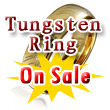Tungsten Occurrences
The amount of tungsten in the Earth’s crust is estimated to be 1.5 parts per million, or about 1.5 grams per ton of rock. It does not occur as a free metal. Tungsten is about as abundant as tin or as molybdenum, which it resembles, and half as plentiful as uranium. Although tungsten occurs as tungstenite—tungsten disulfide, WS2—the most important ores in this case are the tungstates such as scheelite (calcium tungstate, CaWO4), stolzite (lead tungstate, PbWO4), and wolframite—a solid solution or a mixture or both of the isomorphous substances ferrous tungstate, FeWO4, and manganous tungstate, MnWO4.
For tungsten the ores are concentrated by magnetic and mechanical processes and the concentrate is then fused with alkali. The crude melts are leached with water to give solutions of sodium tungstate, from which hydrous tungsten trioxide is precipitated upon acidification, and the oxide is then dried and reduced to metal with hydrogen.
Tungsten is rather resistant to attack by acids, except for mixtures of concentrated nitric and hydrofluoric acids, and it can be attacked rapidly by alkaline oxidizing melts, such as fused mixtures of potassium nitrate and sodium hydroxide or sodium peroxide; aqueous alkalies, however, are without effect. It is inert to oxygen at normal temperature but combines with it readily at red heat, to give the trioxides, and is attacked by fluorine at room temperature, to give the hexafluorides.
Tungsten metal has a nickel-white to grayish lustre. Among metals it has the highest melting point, the highest tensile strength at temperatures of more than 1,650° C (3,002° F), and the lowest coefficient of linear thermal expansion (4.43 × 10-6 per °C at 20° C). Tungsten is ordinarily brittle at room temperature. Pure tungsten can, however, be made ductile by mechanical working at high temperatures and can then be drawn into very fine wire. Tungsten was first commercially employed as a lamp filament material and thereafter used in many electrical and electronic applications. It is used in the form of tungsten carbide for very hard and tough dies, tools, gauges, and bits. Much tungsten goes into the production of tungsten steels, and some has been used in the aerospace industry to fabricate rocket-engine nozzle throats and leading-edge reentry surfaces. (For information on the mining, recovery, and applications of tungsten, see tungsten processing.)
Natural tungsten is a mixture of five stable isotopes: tungsten-180 (0.12 percent), tungsten-182 (26.3 percent), tungsten-183 (14.28 percent), tungsten-184 (30.7 percent), and tungsten-186 (28.6 percent). Tungsten crystals are isometric and, by X-ray analysis, are seen to be body-centric-cubic.
The more important tungsten ores are wolframite and scheelite; with smaller importance can also be considered tungstite and cuprotungstite. The largest world deposits occur in China (75% of the total), and in smaller amounts in other countries such as Portugal. The most important extraction mines in Portugal are located in Panasqueira and in Borralha, from which, during II World War, about 6000 tons of ores per year were extracted.
Tungsten occurs in wolframite, scheelite, huebnertie, and ferberite. Important deposits of tungsten occur in USA(California and Colorado), South Korea, bolivia, Russia, and Portugal. China(Jiangxi and Hunan Province) is reported to have about 75% of the world's tungsten resources.






 sales@chinatungsten.com
sales@chinatungsten.com